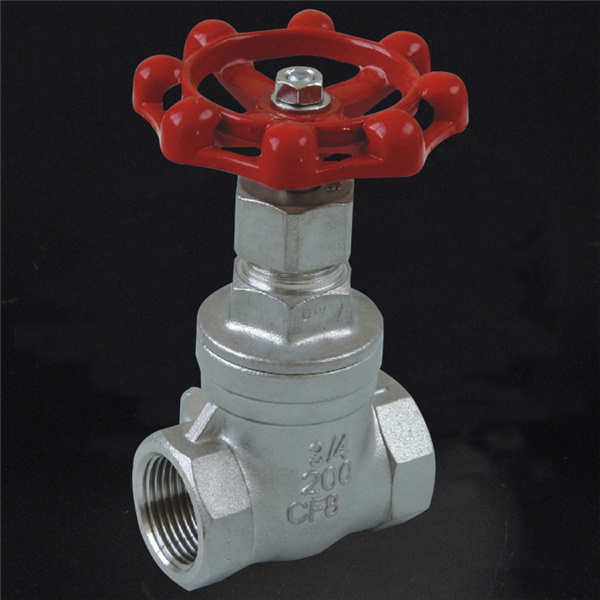Gate valve is also called gate plate valve or gate valve. It controls the opening and closing of the valve through the lifting of the gate. The gate is perpendicular to the fluid direction.The channel size can be changed by changing the relative position between the gate and the valve seat.
Rising stem gate valve
According to the different movement of the valve stem when the gate valve is opened and closed, the gate valve is divided into two types: rod type and non rod type.
The stem thread of rising stem gate valve is exposed outside the valve body. When opening the valve, the stem extends the handwheel. Its advantage is that the opening size of the valve can be judged according to the extension length of the stem,
The contact length between the valve rod and the medium is small, and the threaded part is basically not affected by the medium corrosion. The disadvantage is that the height of the extension space is large.
The thread of the stem of the Non rising stem gate valve is matched with the internal thread of the ram inside the stem. When opening the valve, the stem only rotates without lifting up and down, and the ram rises along the thread of the stem.
The advantage of Non rising stem gate valve is small extension space, but the disadvantage is that the opening of the valve can not be judged according to the valve stem, and the valve stem thread is easy to be corroded in long-term contact with the medium.
The gate valve has the advantages of small fluid resistance, constant medium flow direction, slow opening, no water hammer, easy flow regulation, etc. the disadvantages are complex structure, large size
Long opening and closing time, difficult maintenance of sealing surface, etc. Because it is widely used in large-diameter water supply pipeline, it is also known as water gate.
Precautions for use:
1. When the valve stem is opened and closed in place, do not force again, otherwise the internal thread or bolt screw will be broken, causing damage to the valve;
2. F wrench can be used to open and close the valve when the hand cannot be directly opened and closed;
3. When opening and closing the valve, pay attention to observe the sealing surface of the valve, especially at the packing gland to prevent leakage.


